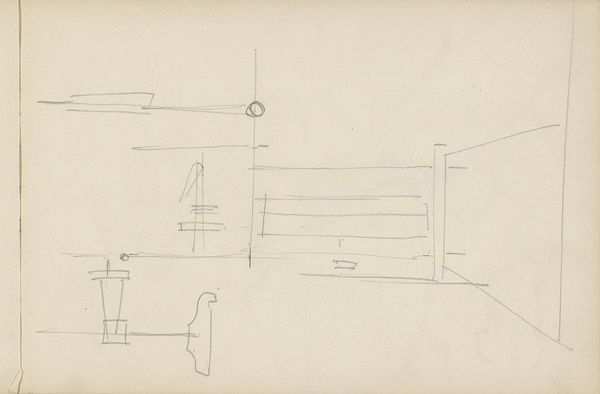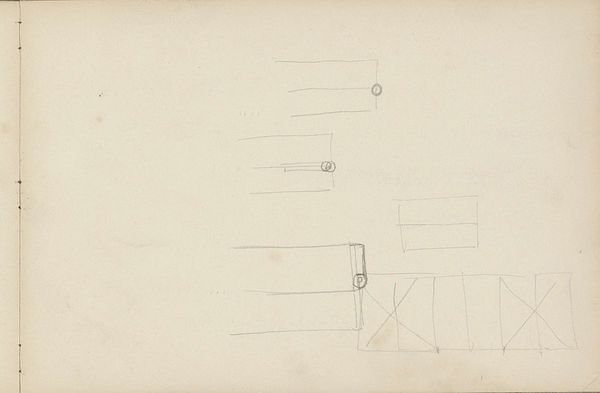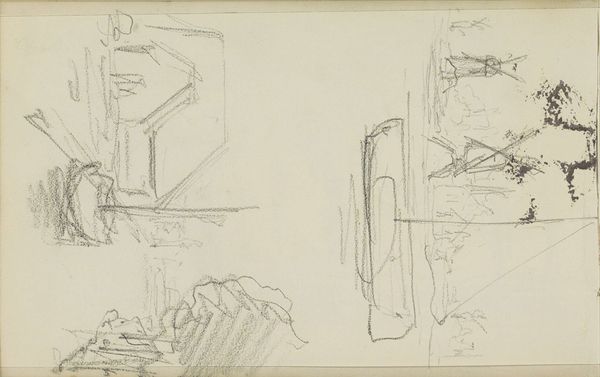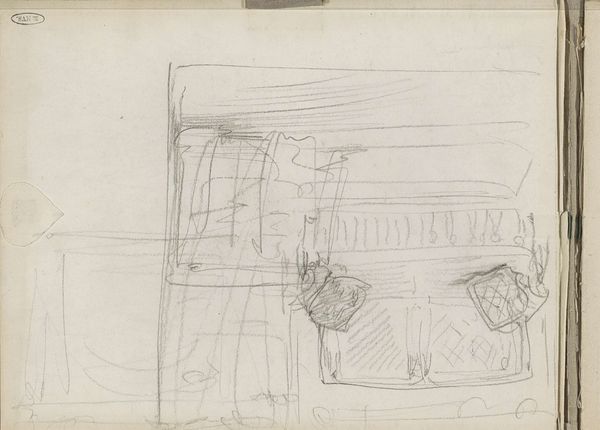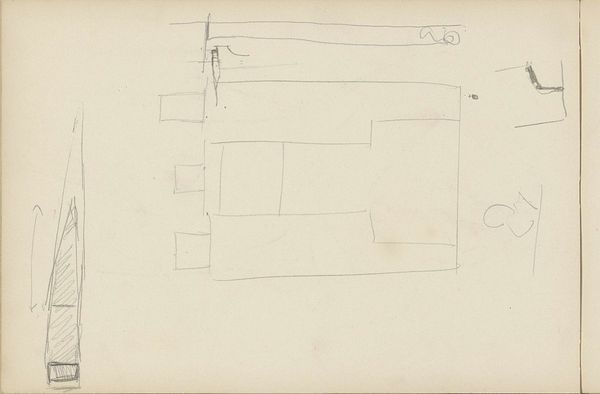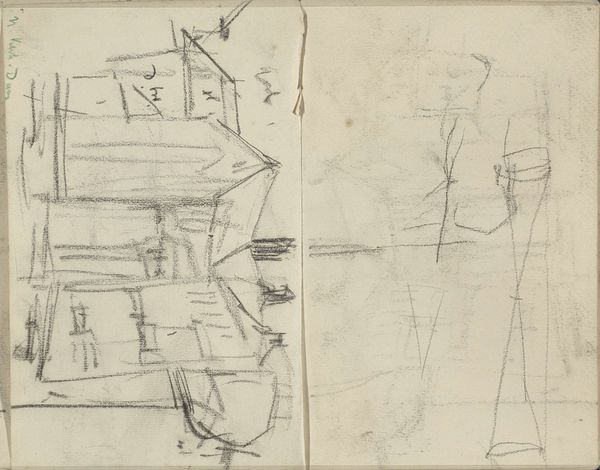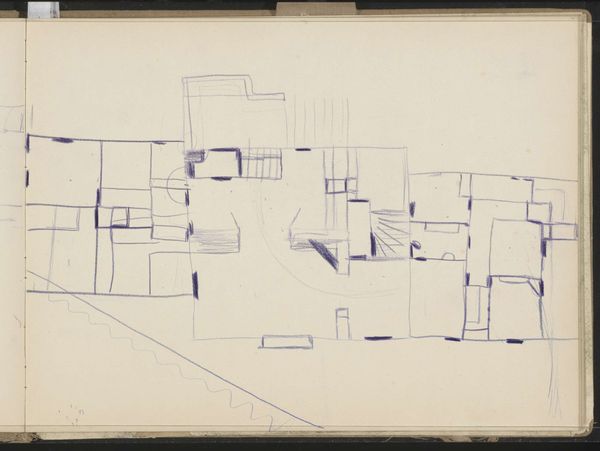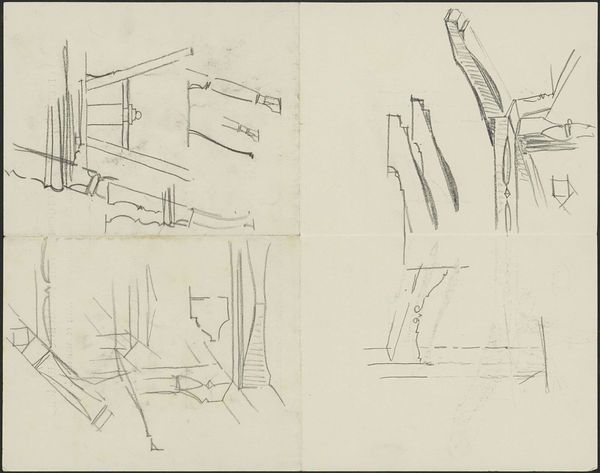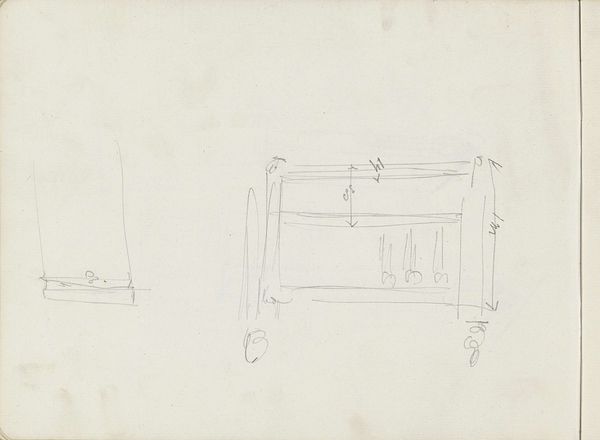
drawing, paper, pencil, architecture
#
drawing
#
dutch-golden-age
#
paper
#
form
#
geometric
#
pencil
#
line
#
architecture
Copyright: Rijks Museum: Open Domain
Carel Adolph Lion Cachet made this sketch, now at the Rijksmuseum, to explore architectural forms. The recurring arches and rectangles, seemingly simple, echo deeper historical and cultural symbols of enclosure and transition. Consider the arch itself. In ancient Roman architecture, it signified triumph and passage, framing emperors and deities. Here, it's reduced to a skeletal form, yet it retains a sense of implied movement, of going from one space to another. Notice the angular forms, too; they remind me of early Christian symbols of refuge and protection. These shapes aren't merely structural; they resonate with a collective memory, a subconscious yearning for stability and order. Think of how similar motifs appear in medieval fortress designs, evolving into the domestic thresholds of Renaissance homes. The diamond at the centre of the lower arch also echoes the lozenge shape associated with female fertility and creation. Lion Cachet may not have consciously intended these connections, but his artistic choices tap into a reservoir of shared human experience. These linear forms engage viewers on a visceral level, stirring unconscious associations with shelter, passage, and transformation. The cyclical progression of these forms have resurfaced and evolved in various historical contexts, continuing to subtly influence our perceptions of space and belonging.
Comments
No comments
Be the first to comment and join the conversation on the ultimate creative platform.
